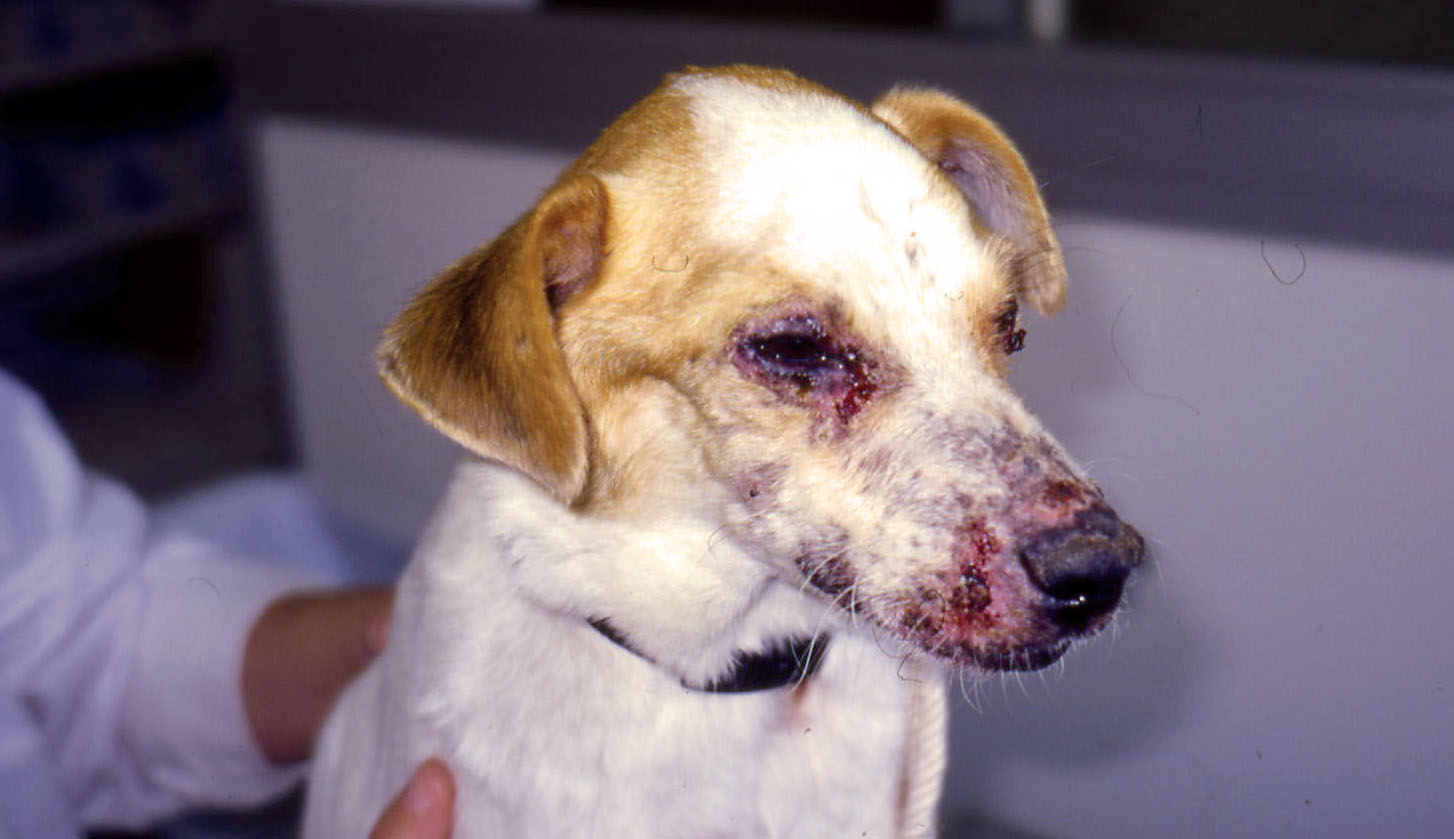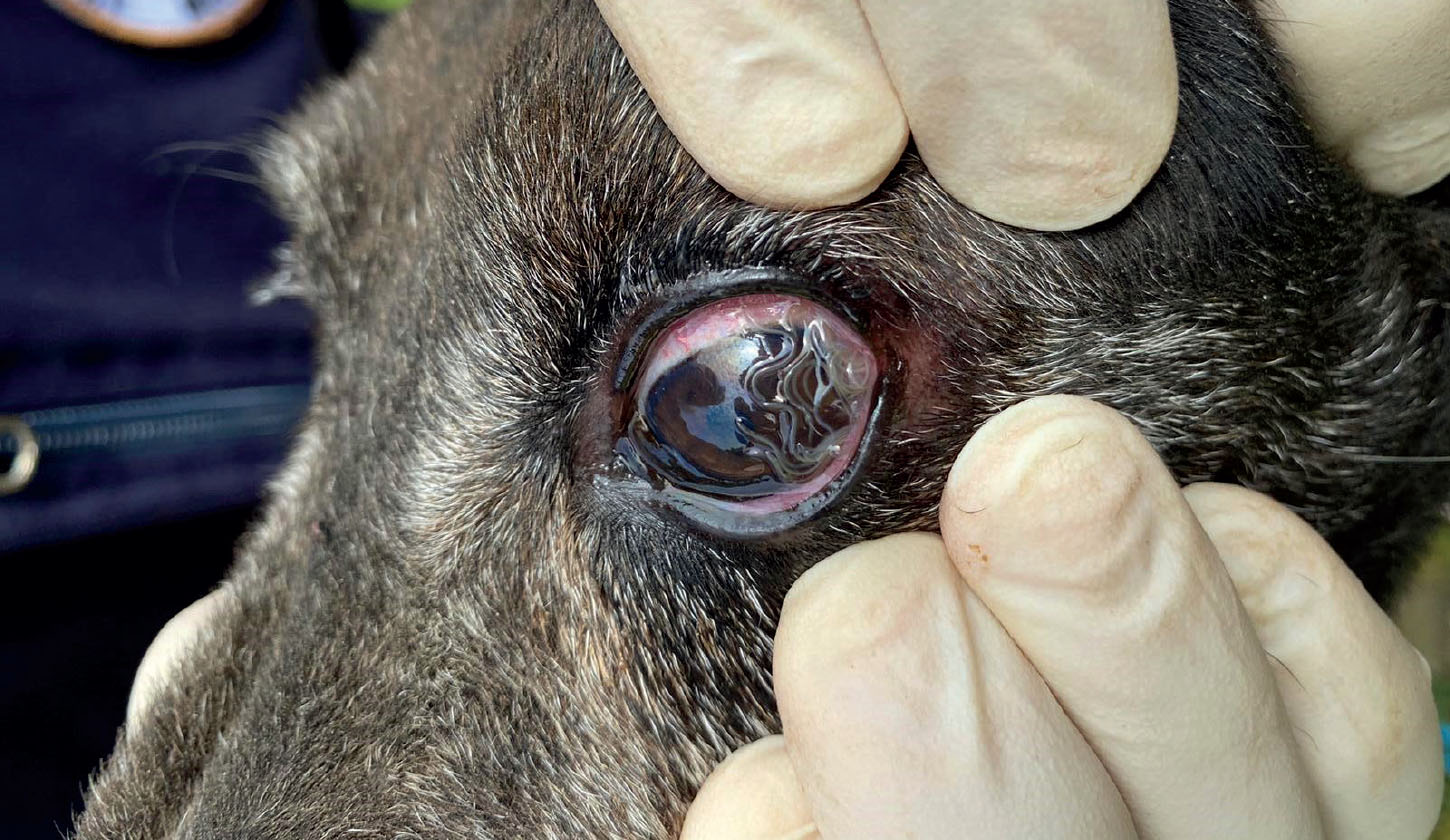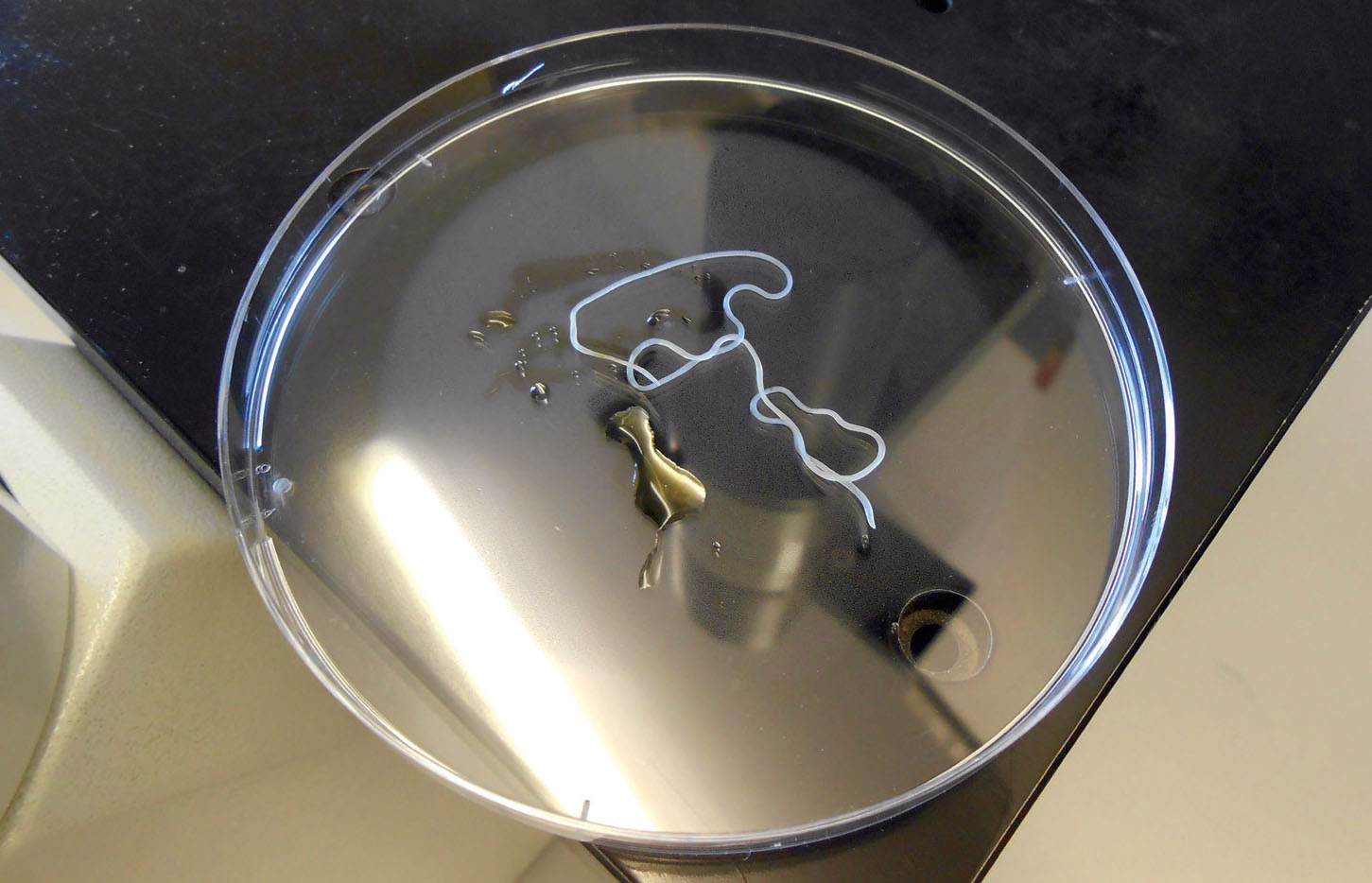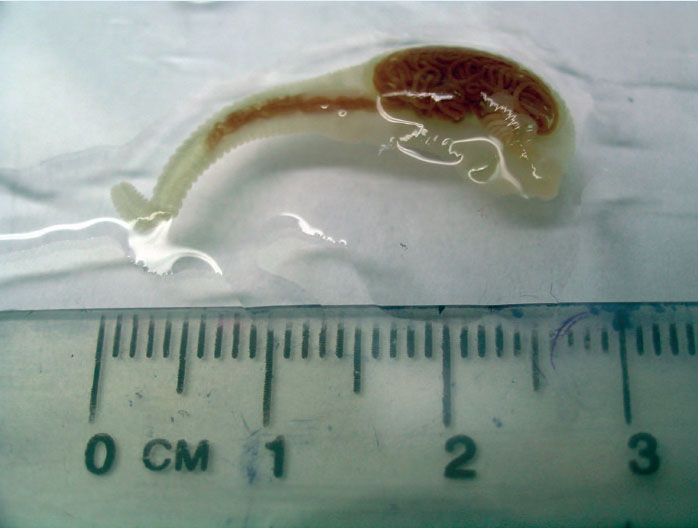There continues to be a rapidly changing picture for the distribution of parasites affecting pets and the vectors that transmit them. Mild weather conditions and continued increases in pet travel and importation make it difficult to predict where and when pathogens will emerge, and the risk they will pose to UK biosecurity, human and animal health.
So what has 2022 brought so far for parasites and their control?
Imported parasites
Increasing numbers of imported rescue cats and dogs have been seen over the past few years with associated risk of exotic pathogens entering the UK. These numbers are also likely to be swelled in 2022 by Ukrainian pets accompanying people displaced by the war in that country. With the exception of these Ukrainian pets, ESCCAP UK & Ireland does not support importation where pets can be rehomed in the country of origin. Where importation is occurring, ESCCAP UK & Ireland is keen to work with charities to improve screening prior to importation and to raise awareness of associated issues. ESCCAP UK & Ireland also supports charities working in countries around the world to improve animal welfare and reduce the need for animal relocation.
Heartworm and Leishmania cases reported to ESCCAP UK & Ireland continue to remain high imported from a wide variety of countries both inside Europe and more distant locations such as South America, Africa, and Asia. Another case of suspected horizontal transmission of Leishmania has recently been recorded in the UK (Luker et al, 2022). This is a reminder that Leishmania infection needs to be considered as a differential in dogs with relevant clinical signs living with other positive pets, and in those whose parents have lived/travelled abroad. Clinical presentations are varied and commonly include lymphadenopathy, cutaneous signs (e.g. generalised and focal alopecia, hyperkeratosis, dermal ulcers and peri ocular alopecia, Figure 1), weight loss, splenomegaly and renal signs associated with glomerulonephritis. Less commonly polyarthritis, thrombocytopenia, ocular inclusion bodies, uveitis and neurological signs associated with spinal and central nervous systemn (CNS) granulomas may be present.

New evidence is emerging regarding treatment of heartworm positive dogs. A study has shown ‘slow kill’ of heartworm in positive dogs is an effective alternative when melarsomine adulticide is not available (Savadelis et al, 2020). The study using moxidection/imidacloprid for 40 weeks (combined with oral doxycycline for the first 30 days) had similar efficacy as using an adulticide and with dogs rested appropriately, good treatment outcomes. Studies have shown that slow kill can increase cardiac/pulmonary vessel damage over time as it takes longer to kill the worms and can also promote drug resistance in endemic countries. For this reason, an adulticide should always be a first choice as part of a recognised treatment protocol. If this is not an option though, this study shows promise as an alternative.
The filarial nematode Onchocerca lupi has been reported in two dogs imported into the UK for the first time (McGarry et al, 2022). Adult worms are usually found in periocular nodules and should be considered as a differential for dogs presenting with these lesions from continental Europe, North Africa, the Middle East, and the USA.
Last year, Chief Veterinary Officer, Christine Middlemiss also highlighted in the Vet Record the zoonotic risk of Brucella canis entering the UK in imported dogs and this risk continues to be high. This risk extends to veterinary professionals coming into contact with infected dogs in practice as well as new owners and charity workers. Vigilance for relevant clinical signs in practice is vital alongside screening dogs imported from endemic countries both to reduce personal risk but also to help prevent establishment of this pathogen in the UK (Middlemiss, 2021).
ESCCAP UK & Ireland continues to recommend veterinary surgeons follow four key steps (the ‘four pillars’) in all imported dogs. These are:
- Checking for ticks and subsequent identification
- Treating dogs with praziquantel within 30 days of return to the UK in addition to the compulsory treatment, and treating for ticks if a tick treatment is not in place
- Recognising clinical signs relevant to diseases in the countries visited or country of origin
- Screening for exotic parasites in imported dogs.
For dogs imported into the UK we would recommend the following screening tests:
- Leishmania — quantitative serology and/or polymerase chain reaction (PCR)
- Heartworm — antigen blood test and a Knott's test
- Ehrlichia canis and Anaplasma spp. — serology, PCR
- Hepatozoon canis — blood smear and/or PCR
- Babesia spp — PCR
- Brucella canis — consult your external laboratory for a suitable test.
Leishmania and heartworm testing should be repeated 6 months later if initial tests are negative or if relevant clinical signs develop.
Many of the tests in this list can be performed economically though PCR packages or patient side testing. A thorough clinical examination is also essential to identify relevant clinical signs and to look for evidence of gross worm infestation such as Thelazia callipaeda (eye-worm, Figure 2), Dirofilaria repens (skin worm, Figure 3) and Linguatula serrata (nasal pentastomid, Figure 4). ESCCAP UK & Ireland has collaborated with the Animal and Plant Health Agency (APHA) to provide a free service for the identification and surveillance of these exotic parasites in UK dogs. This is vital to improve prognostic outcomes and to minimise the risk of UK establishment. APHA will carry out free of charge, morphological identification of suspected cases of these parasites seen in veterinary practices in England and Wales. Samples should be posted to the APHA Carmarthen Veterinary Investigation Centre. Sample submissions must be accompanied by full clinical history to qualify for free testing. Posters are also available on the ESCCAP UK & Ireland website to help identify exotic parasites and ticks associated with imported dogs. https://www.esccapuk.org.uk/parasite-id-posters-uk.



Lungworm
Relatively mild weather in 2021 and into 2022 has likely supported continuing slug activity and numbers. Veterinary professionals should therefore continue to be vigilant for cases of
Angiostrongylus vasorum in their area and advise preventative treatment for high risk dogs (previously infected dogs, those dogs living in close proximity to other cases, those co-prophagic, eating slugs, snails, grass and amphibians). As well as preventative treatment for dogs whose geographical location and lifestyle puts them at risk from exposure from A. vasorum, simple precautions such as bringing toys, food and water bowls indoors at night, and avoiding walking after periods of rain, will also help to minimise any risk of transmission by this route.
The University of Nottingham is investigating why fenbendazole is still prescribed as a treatment for A. vasorum lungworm infection when there are licensed alternatives available. This is important to understanding factors influencing prescribing choices and future product development. For more information please visit https://www.youtube.com/watch?v=KQdjf_wWSvY or twitter https://twitter.com/Sci_Ani/status/1525127922071351297.
Tapeworm
The incidence of Echinococcus granulosus is much more widespread in Britain than previously thought. Post-mortem inspections in abattoirs across Britain have produced positive cases with a particularly high incidence on the Welsh border and North Midlands. HyData UK is a multi-centre collaborative study investigating the national distribution of E. granulosus in high-risk dog populations (hunting hounds, farm dogs and pet dogs in rural areas), livestock (cattle, sheep) and horses at slaughter in England, Wales, Scotland and Northern Ireland. Using a molecular epidemiological approach and geographic information systems (GIS) methodology, the study aims to build a more comprehensive picture of E. granulosus geographic distribution in the UK. Until these results become available, prevention advice to pet owners must be based on lifestyle risk of the pet, including:
- Monthly treatment with praziquantel of all dogs in known hydatid endemic areas unless kept on leads and fed cooked diets
- Monthly treatment with praziquantel for any dogs outside these areas shedding Taenia tapeworm segments (the risk factors for Taenia spp. and E. granulosus infection are broadly the same), fed raw offal/unprocessed raw diets or have access to fallen livestock
- At least four times a year praziquantel treatment for dogs in non-endemic areas that are out of sight off lead with potential pasture access
- Promotion of anti dog fouling, keeping dogs on leads around farms and livestock, and promotion of adequately frozen or cooked diets.
These measures will also help to control Taenia spp. tapeworm in dogs that can lead to significant losses and economic hardship for farmers, as well as revulsion for owners.
Fleas
The big flea project has found 28.1% of cats and 14.4% of dogs to be positive for fleas. 11.3% of these infested pets were found to be harbouring fleas infected with Bartonella spp. and 5% with Rickettsia felis, both zoonotic pathogens (Abdullah et al, 2019). They are of particular significance in the immune suppressed, making flea control vital in these groups. Veterinary professionals should continue to advise routine year-round preventative treatment to prevent household flea infestations to limit this zoonotic risk and the misery that living with household flea infestations can entail.
Recent research has reinforced the need to take environmental contamination with insecticides seriously (Perkins et al, 2020). Fipronil and imidacloprid contamination was found in UK waterways with the possibility that the source may have been flea prevention products. This study demonstrates that further research is needed into all potential sources of waterway contamination including, but not limited to, the veterinary industry. Year round flea treatment for cats and dogs however, remains essential because:
- Exposure to fleas is ubiquitous with no single group of pets being at significantly decreased risk compared with others
- Exposure occurs all year round and if you wait until flea infestations establish then they take months to eliminate, resulting in increased morbidity and discomfort for pets and owners as well as increased zoonotic pathogen exposure
- If veterinary professionals do not recommend year-round flea treatment for cats and dogs then infestations will occur leading to many pet owners seeking flea products elsewhere, often without correct application advice (how to apply without spillage, avoid swimming, shampooing etc.), leading to more environmental contamination and not less.
Not all flea infestations however, are caused by cat fleas, with bird and rodent fleas requiring a focus on environmental control. The poster section on the ESCCAP UK & Ireland website now has flea ID posters to help identify fleas to see whether cat fleas or other species are present in the event of flea control breakdown (https://www.esccapuk.org.uk/parasite-id-posters-uk/).
What is the rest of 2022 likely to hold?
Risk assessment is likely to be a major focus for the rest of 2022 alongside ongoing vigilance for exotic parasites in imported pets. A risk-based approach to preventative parasiticide use is essential to avoid unnecessary treatment while ensuring that zoonotic risk and threats to animal wellbeing are minimised. Time in practice and lack of current data are major barriers to these being implemented and a range of new tools to make assessment easier in practice are planned for launch in 2022. New data are also emerging with longitudinal prevalence data and environmental contamination data for Toxocara ova expected to be published this year. This will help to fill data gaps in this area and assess to what extent human exposure to Toxocara eggs in public places may be occurring. These data are important to reinforce the need for measures to limit this exposure including routine preventative treatment in cats and dogs. The arrival of O. lupi in the UK also demonstrates the unpredictability of what new parasites may be just around the corner.


